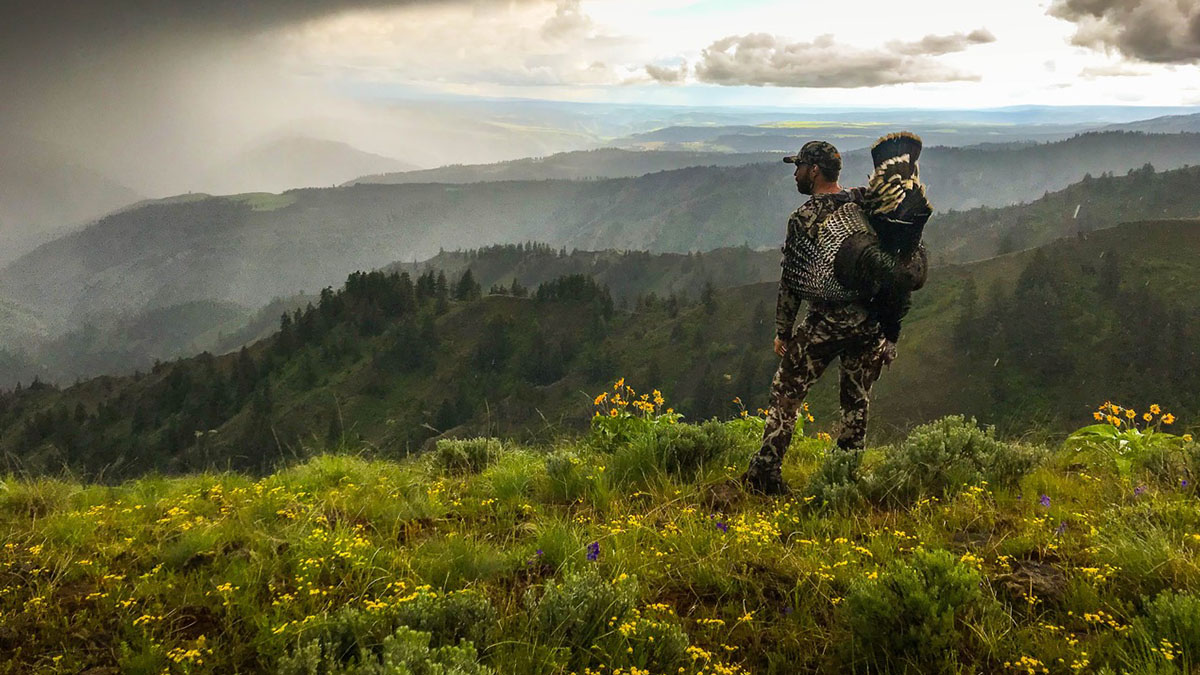
You might know Dr. Seth Bynum from our Ask A Vet series. When Dr. Bynum isn’t working on dog reproduction medicine or upland hunting, he’s zeroing in on gobblers. The self-diagnosed turkey hunting addict has enough beards hanging in his garage to make any turkey hunter jealous.
Nearly 20 years of experience has fine tuned Dr. Bynum’s tactics for hunting turks left of the Mississippi River. He cut his teeth calling pressured gobblers in the East, and adapted those strategies for targeting flocks in Idaho, Washington, and Montana. In this interview, the Bird Dog Vet shares his mountain gobbler hunting knowledge with us.
How to Kill an Evening Gobbler
MM: You often hunt turks in the afternoon and evening instead of mornings. Why is that?
SB: Sunrise gobbles are synonymous with turkey hunting, but don’t discount the afternoon or early evening as a prime time to kill a longbeard. Even if he spends the day with his hens—paying no lip service to your seductive calling—something changes in his demeanor when he knows the clock is ticking for pre-roost romance.
MM: What’s the trick for killing a tom in the later hours of the day?
SB: Call it greed or anxiety about a long night of celibacy, but I’ve had luck pulling gobblers away from the flock in evenings, especially if I can get near their favorite roosting areas. Scout out their evening haunts and park yourself there in the late afternoon. Occasionally, it’s the hens that start protesting the presence of a new lady on their turf. I cut aggressively on the mouth call or slate with the intent of challenging the boss hen or mimicking the ladies’ assembly call prior to hitting the roost. If you’re convincing enough, the hens will drag the gobbler along right to your calling.
Run-and-Gun Hunting
MM: What’s your take on gobbling toms that just won’t leave their hens?
SB: It’s easy to get bogged down by a vocal but otherwise hopelessly henned up gobbler. As painful as it may be to leave a turkey to find other turkeys, I’ve had success throwing in the towel and moving on to find a tom that’s willing to play the game.
MM: Is this something that works in the East and West?
SB: This tactic certainly works better out West or on big parcels of national forest in the East. It’s ideal where there’s room to roam and new pockets of birdy habitat to explore. The breeding season for a turkey isn’t all that long, and if you’re willing to invest some sweat equity and boot leather, you can find a love-sick tom who’s working equally hard to find a girlfriend. Just be prepared for a longer walk back to the truck with an extra 20 pounds slung over your shoulder.
Stalking Turkeys
MM: You’ve mentioned that you often need to “stalk” turkeys out West. What’s the background here?
SB: It’s not “the show” most hunters picture in the spring woods. But there’s satisfaction in sneaking up on a bird with eyesight so keen he’ll bolt at an untimely twitch of your nose. If a tom is intent on doing things on his terms and you’re running short on white meat in the freezer, don’t discount a well-executed belly crawl into gun range as an effective strategy in desperate times.
I use small rises in the terrain and vegetation to hide movement, and time my advances when his head is down feeding or his back is turned in strut. In my experience, most gobblers are unfazed by the sound of rustling vegetation, but this isn’t the time to bust out a yelp or purr. Resist the urge to call, even if the bird is working away from you. As long as his attention is elsewhere, most Western terrain allows for the chance to sneak into shotgun range.
Late Season, Great Season
MM: Do you prefer to hunt opening weekend, or is there a better time to target Western birds?
SB: If you listened to episode 214 of the MeatEater podcast, you know that the dates set for each spring season in the West don’t always line up perfectly with the breeding cycle. Each phase of the spring hunt brings new opportunity and challenges.
In the opening weeks of the season, I try to dodge snowstorms and focus my efforts on getting new or novice hunters into gullible 2-year-old birds. But if you’re patient, the last few weeks of May offer some of the best action of the season. The weather is pleasant and predictable, the hens are on the nest, and the older birds become vulnerable when their harem disperses right after flydown. In Idaho and Washington, I’ve seen active gobbling and breeding activity well through the middle of June. Most hunters have already filled their tags in April, but the woods are just heating up around Memorial Day.







Conversation